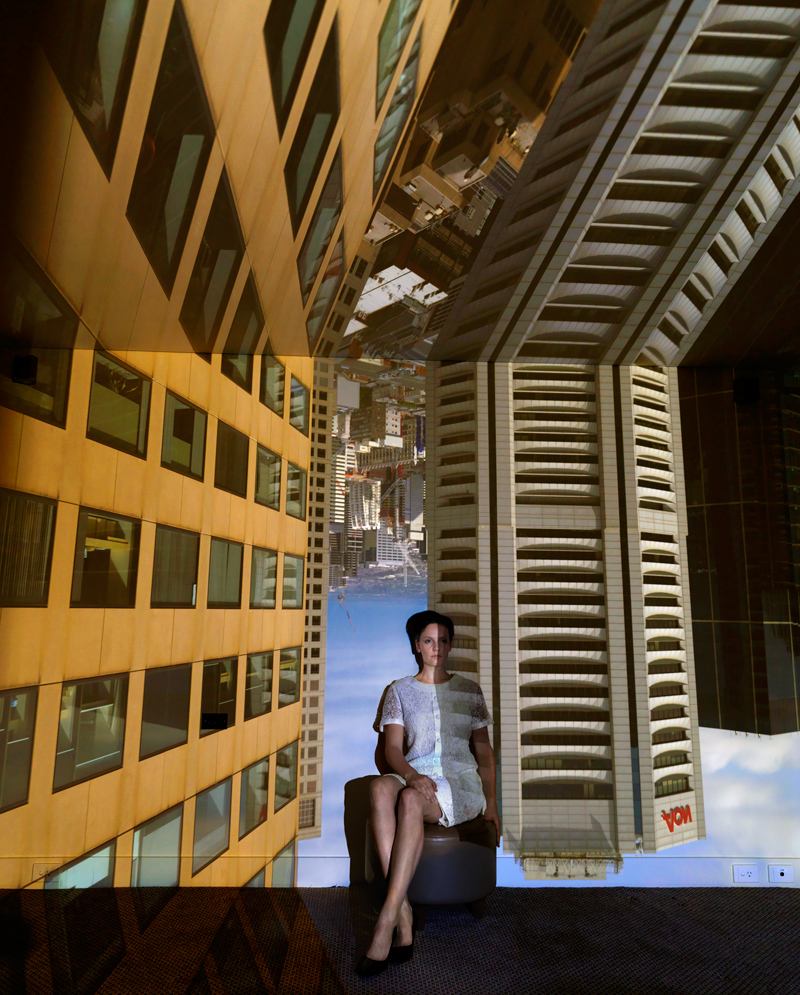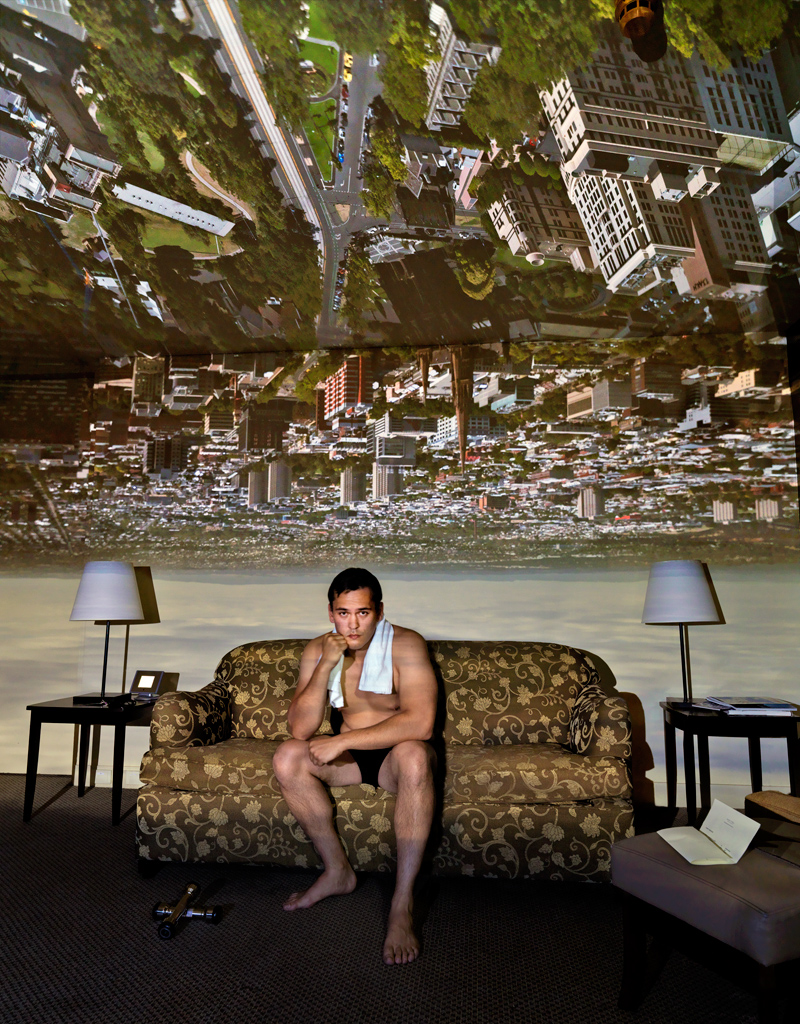Robyn Stacey
Through Robyn Stacey’s photography we imagine other people’s private worlds. For the past 5 years her spectacular compositions have breathed new life into the old families of Sydney, reviving their personal objects from historic collections to evoke scenes as if they’ve just exited the room, leaving only a sprinkling of crumbs. Now, turning from high fidelity studio photography to the non-digital process of camera obscura, Stacey brings our gaze to contemporary life and the transitory meetings of private and public worlds within the modern hotel room. Like pinhole photography, the camera obscura allows light in through a tiny hole in order to project a scene from outside onto an inside surface. Stacey recreates this process with ambitious scale and in unexpected settings, transforming the interiors of high-rise city chains and quiet coastline holiday destinations, into darkrooms for dramatically projected landscape vistas. As photography techniques have become more and more digitized there is a growing interest amongst artists in early photographic techniques.
This historical form of image making, which Caravaggio and Vermeer are said to have used to create their impressive Baroque paintings, elaborately decorates the otherwise hermetic hotels rooms by wallpapering them with the world outside their windows. Normally characterized by modern minimalism and standardized comforts, these interiors are covered with the colonnades of buildings, the cityscapes of roads, rivers and parks, and the turquoise shores of a sunbather’s paradise. What sets Stacey’s work apart is the added poetic layers created by the inclusion of people in these ephemeral spaces. Businessmen, young couples, and solo travelers are actors in these dreamlike scenarios; the upside-down, reversed and distorted visual effects of camera obscura, produce surreal and psychological spaces which seem to materialize their inhabitants’ distant thoughts.
Like stills from the sets of movies, Stacey’s images offer us fragments of untold narratives. Intimate and enigmatic moments glimpse the plethora of stories we can only imagine might play out within a hotel rooms’ four walls: the melodramas of domestics, the passionate professions of love, and the time-slowing boredom and loneliness that might accompany a life spent in endless waiting. Through the theatrical and distorted view of camera obscura is revealed a roving, fragmented and homogenized portrait of contemporary life. But by imbuing the transitory with the timeless, Stacey suggests that behind these closed, generic doors, we may all be looking outwards, seeking moments of beauty, clarity and meaningful connection.


